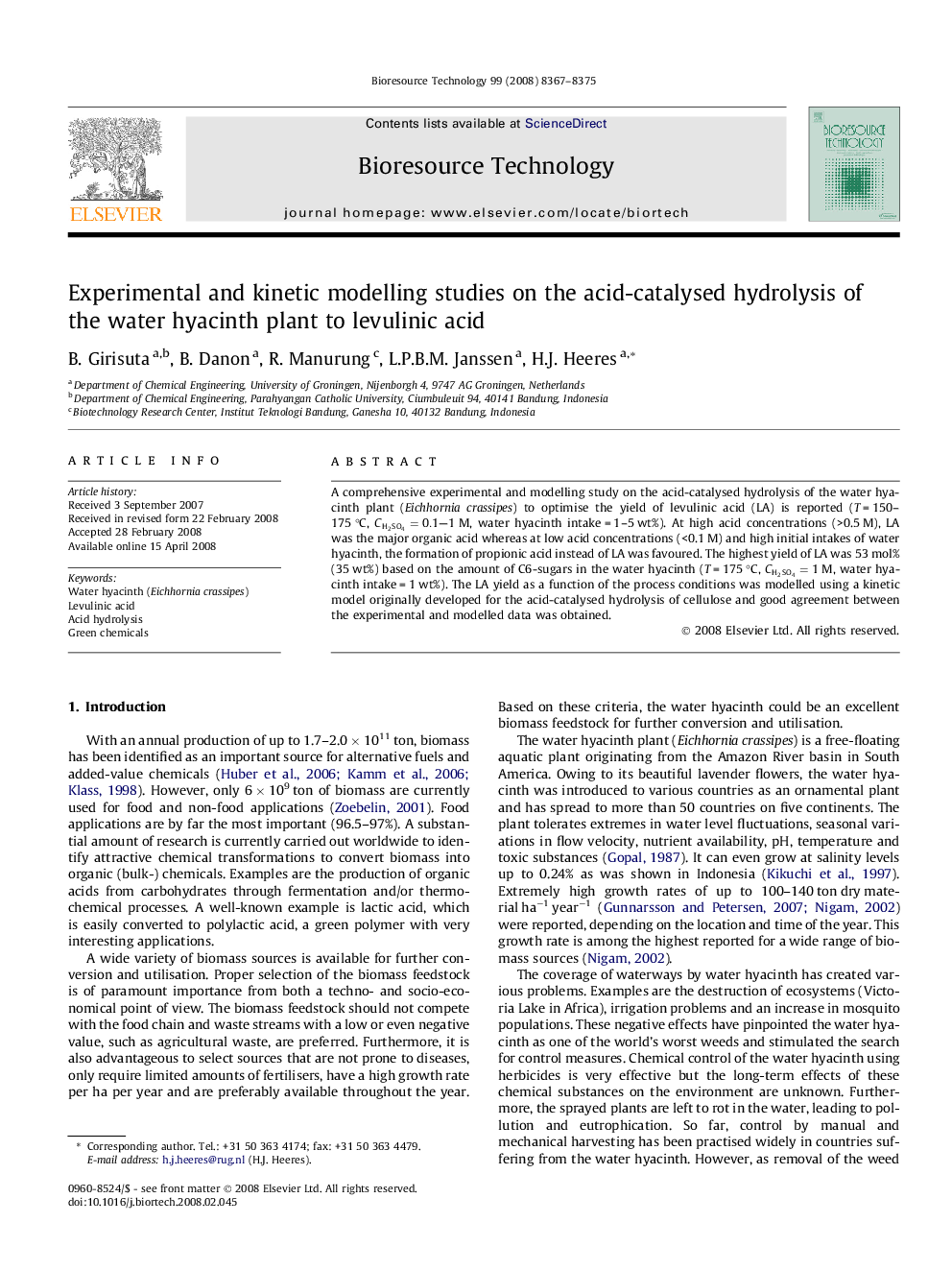| Article ID | Journal | Published Year | Pages | File Type |
|---|---|---|---|---|
| 684579 | Bioresource Technology | 2008 | 9 Pages |
A comprehensive experimental and modelling study on the acid-catalysed hydrolysis of the water hyacinth plant (Eichhornia crassipes) to optimise the yield of levulinic acid (LA) is reported (T = 150–175 °C, CH2SO4=0.1–1M, water hyacinth intake = 1–5 wt%). At high acid concentrations (>0.5 M), LA was the major organic acid whereas at low acid concentrations (<0.1 M) and high initial intakes of water hyacinth, the formation of propionic acid instead of LA was favoured. The highest yield of LA was 53 mol% (35 wt%) based on the amount of C6-sugars in the water hyacinth (T = 175 °C, CH2SO4=1M, water hyacinth intake = 1 wt%). The LA yield as a function of the process conditions was modelled using a kinetic model originally developed for the acid-catalysed hydrolysis of cellulose and good agreement between the experimental and modelled data was obtained.
